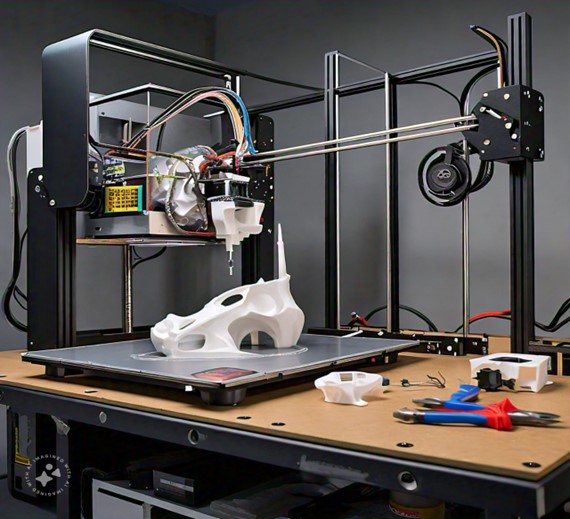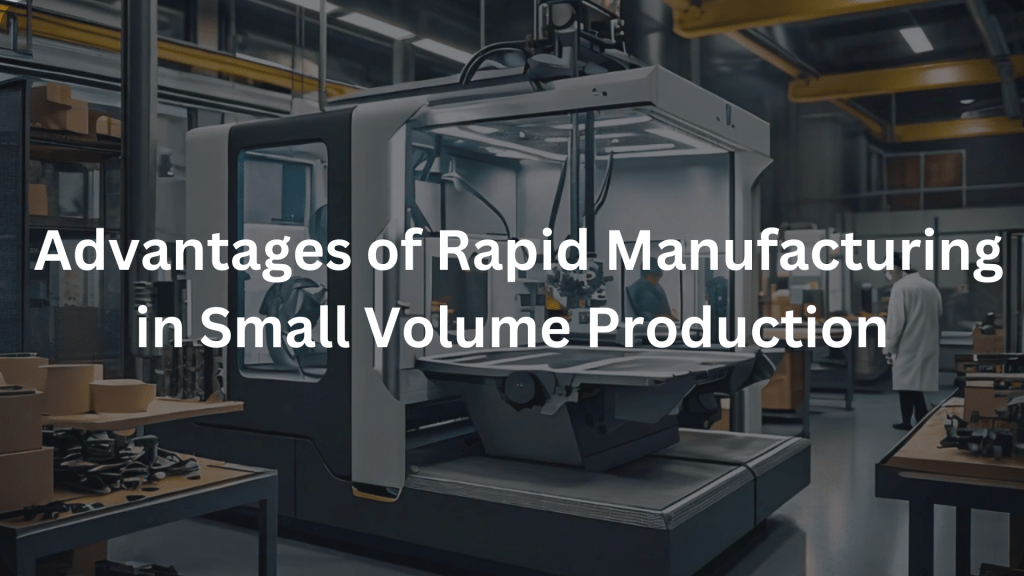rapid manufacturing technology is changing the product manufacturing ways. In this technology, additive manufacturing and 3D printing are the two most dominant technologies to create products for small-volume production. The entire process is extremely fast.
The major applications of rapid manufacturing are consumer goods, aerospace, and automotive industries. Contemporary consumer demand is pretty versatile which asks for unique manufacturing solutions. it has the potential to meet such customized demands at affordable cost.
Key Takeaways of the article:
- Introduction To Rapid Manufacturing
- Rapid Manufacturing Benefits
- Advanced Manufacturing Technologies
- Real World Examples
- Potential Challenges
Foundations of Rapid Manufacturing
What is Rapid Manufacturing?
In simple words, it incorporates two technologies: additive manufacturing and 3D printing to produce parts faster. It relies very less on traditional product manufacturing methods such as CNC machining or die casting.

So, Rapid Manufacturing is a word or is a coined word that is gaining lot of momentum in recent times. Today, when there is a lot of requirements for customization, today people talk about mass customization. For example, let’s take a spoon that could cater to your requirements. You would like to have a shoe which can cater to your requirements.
Subsequently, you are not supposed to produce more in terms of batches but produce less. However, make it more mass customized. This is what is going to be the future of manufacturing; future manufacturing is going to be more toward mass customization. When we talk about mass customization, we cannot sacrifice time. We cannot sacrifice cost.
So, we are still supposed to work to the expectation of the customer both in terms of economy and in terms of time delivery. in this scenario, we are pushed from mass production to batch production to mass customized production. this mass customized production is termed or is redrafted and given a terminology called Rapid Manufacturing.
Small Volume Production
Small-volume production means making few units. This is often required in aerospace, automotive, and consumer goods. These industries often require special parts that cannot be mass-produced due to higher costs. Rapid manufacturing addresses these needs by providing the possibility of making small quantities.
For companies, small-volume production is important due to new design evaluation purposes, limited editions, or special markets. Key advantages of rapid manufacturing in small-volume production processes include customization to the original design and cost reduction.
Core Benefits of Rapid Manufacturing
Speed and Efficiency
One of the most important advantages of rapid production is speed. Technological operations, including die casting or moulding, are typically accompanied by long time cycles and complex organization, requiring the development of moulds, etc.
On the other hand, rapid technologies provide the opportunity to produce much faster. You can take it as how quickly you can make products for testing and customization. So with this approach, rapid manufacturing companies make unique products in low volume. The cost also remains significantly low.
What is the benefit of this accelerated production? Companies can meet deadlines quickly and respond to customized orders swiftly. Rapid manufacturing in small volume production reduces wait time and helps companies in stay ahead in the competition.
Cost-Effectiveness
A big advantage of rapid manufacturing is the cost, particularly when we talk about small volume production. Traditional manufacturing methods are usually capital-intensive with significant up-front investments in tooling and molds. Whereas additive manufacturing avoids these costs altogether by making products directly from a digital design, which no longer necessitates the costly manufacture and disposal of molds. This has lowered the production costs of small-batch productions.
There is another big advantage; inventory optimization. Companies can avoid overproduction and focus more on on-demand production. It keeps their cost low. No doubt, rapid manufacturing is a great alternative to traditional methods.
Flexibility and Customization
Rapid manufacturing allows for greater flexibility in design and production. Traditional methods are often rigid and require significant changes to tooling if designs are altered. With agile production methods, businesses can modify designs quickly and without extra costs, which is especially important for industries that require frequent updates or custom products.
Additionally, customized production is a significant advantage of rapid manufacturing. It enables companies to offer personalized products, such as custom parts for machinery or one-of-a-kind consumer goods, without significant changes to the production process. Flexible manufacturing systems also allow for a range of products to be produced in small batches, catering to a diverse set of customer needs.
Enhanced Innovation and Quality Control
Rapid manufacturing can also improve product design innovation. Because businesses can quickly prototype and test ideas, they are more comfortable experimenting with new products. Traditional production methods carry significant expense. it allows companies to test and refine designs quickly. Simultaneously, fast prototyping products are easy to refine.
Advanced Manufacturing Technologies
Industry 4.0 and Smart Production
The next frontier for high-speed manufacturing is Industry 4.0. It unites smart factories and the Internet of Things (IoT). Manufacturing systems tend to be composed of compelling features and parameters. This technology also includes digital twin technology. Raid manufacturing companies can effortlessly produce prototypes to assess product performance. It also integrates real-time data via 3ERP systems to control production.
Digital Transformation in Manufacturing
These days, manufacturing companies are inclining towards 3ERP systems. These systems are called digital transformation tools in manufacturing. They keep companies connected to the production units so you can easily monitor the entire manufacturing process and produced units. Some popular ERP systems for manufacturing companies are:
Real-World Applications
In modern consumer goods, the application of rapid manufacturing is extensive. You just name it. Be it aerospace, automotive, healthcare, or consumer goods, rapid manufacturing technology has overwhelmingly engulfed everything. Below, you will read some particular examples of products.
- Aerospace:
- GE Aviation’s 3D-printed engine nozzles
- Boeing’s 3D-printed aircraft parts
- NASA’s 3D-printed rocket engine parts.
- Automotive:
- BMW’s 3D-printed dashboard trim.
- Volkswagen’s rapid prototyping for evs.
- Local Motors’ 3D-printed car, “Strati.
- Consumer Goods:
- Nike’s customized 3D-printed shoes.
- Adidas’ 3D-printed midsoles.
- Procter & Gamble’s rapid prototyping for packaging.
Conclusion
In the above article, you have read how rapid manufacturing in low-volume production is controlling cost without compromising on quality. In conclusion, we can say that it is the future of manufacturing. However, you need a seasoned company that should be an expert in incorporating rapid prototype manufacturing, and fdm 3D printing. Why not RJCMold?
Our company provides the following services for rapid prototype low volume manufacturing:
- Urethane Casting
- RIM reaction Injection Molding
- Fused Deposition Modeling
- Stereolithography
- Selective Laser Sintering
Contact us at mold@rjcmold.com for a quick, free online quote.

